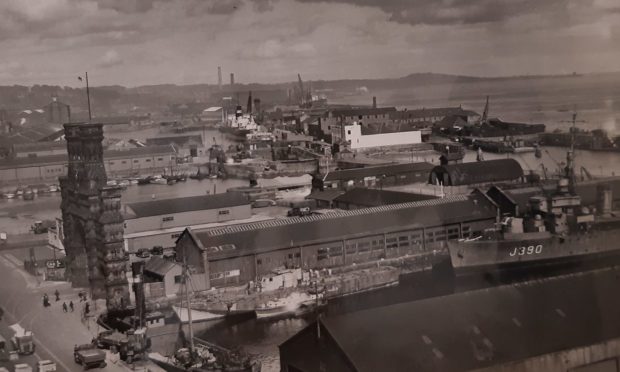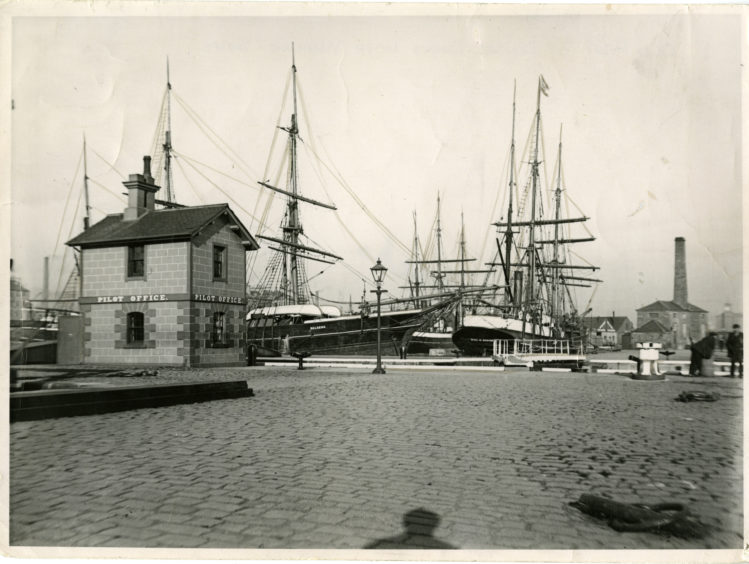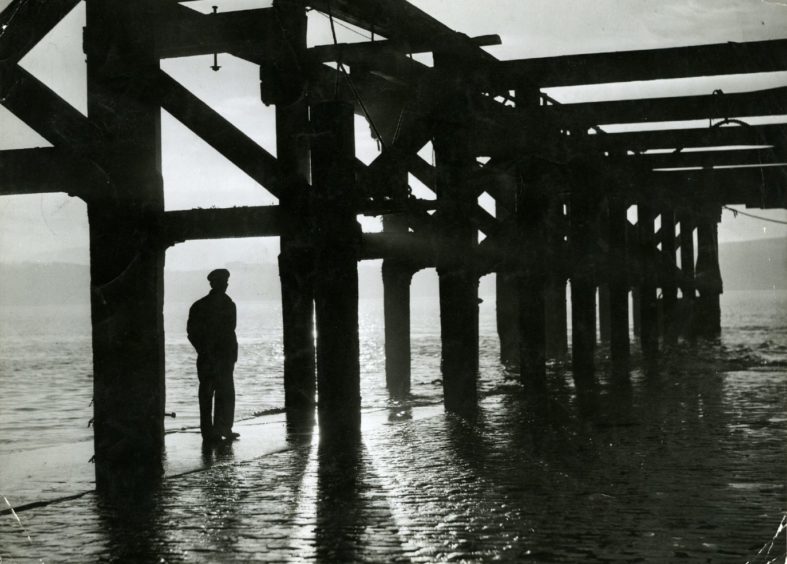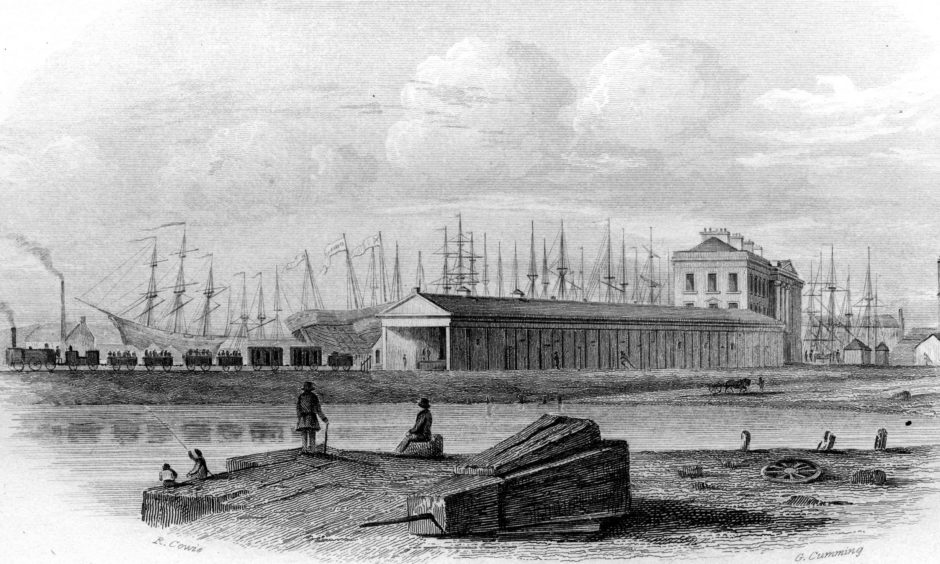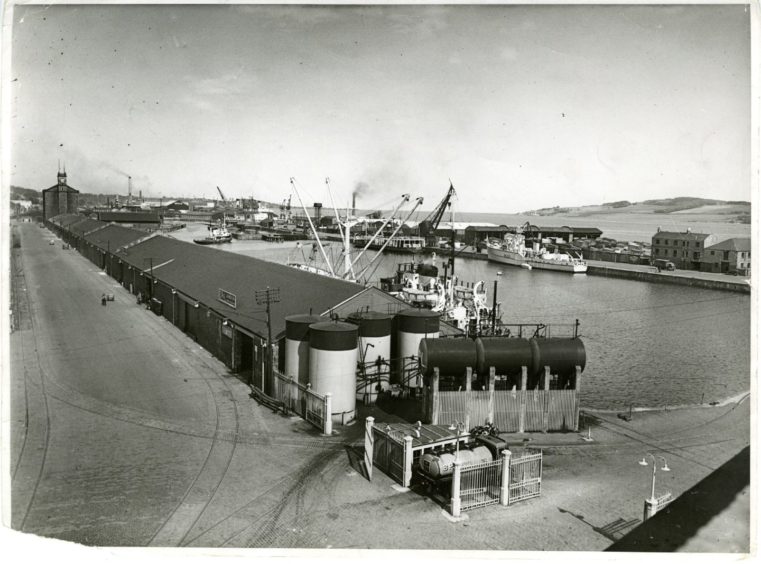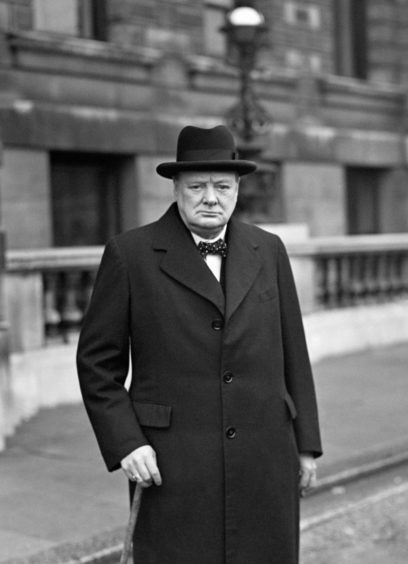The formal opening of Victoria Dock 145 years ago was described as “probably the most spectacular event in the history of the harbour”.
Around 40,000 people packed the harbour to watch the official party arrive.
They sailed in the Dundee, a brand new Fifie, which was followed by the pleasure steamers May, Gazelle, Charles Dickens, and Star o’ Tay, which were all crammed with passengers.
Guard of honour
Fifty men of the Dundee Artillery Volunteers under Captain Cox, who was the son of Provost Cox, provided the guard of honour.
The band of the First Forfarshire Rifle Volunteers played stirring music.
Before getting down to the business of the day, the Dundee and her retinue circled the jute-laden ship, Albula, which was at anchor in midstream, and the Mars training ship at her moorings off Woodhaven.
The first Tay Rail Bridge was under construction and recently-erected piers near Wormit were inspected during this preliminary cruise.
Four launches from the shipyards along the Marine Parade had been fixed to coincide with the big occasion.
These were witnessed in turn from the ceremonial armada.
First new ship off the stocks was a tiny steam yacht, the Spindrift, from Mr William Bruce Thompson’s yard.
The Spindrift, manned by Mr Thompson and guests, was put into the water with steam up and tagged on at the tail of the procession.
A 300-ton wooden barque, the Burmah; the 960-tonne steamer Tern; and the 808-tonne barque Glentilt, followed at 10 minute intervals.
It was a windy afternoon and the tugs had quite a struggle taking the “newly born” into the dock.
As the Dundee entered the lockway at Camperdown Dock, she passed the Mars tender, Lightning, with her boys manning the yards.
The 1,850-ton ship St Enoch, Dundee’s largest windjammer, which had been moved into dock before the ceremony, fired two guns, before an Artillery Band on its decks went into action.
The 1,150-ton barque Strathearn, belonging to Mr William Thomson of Dundee, which had been launched a fortnight before and was first ship into the dock, had Mars boys manning her yards and the Mars Band playing on deck.
The Tern acquired the Industrial School Band and the Glentilt acquired the Lochee School Band to add to the harmony of the occasion.
The Earl of Strathmore performed the formal opening at the harbour which is thought to have existed since the 11th century.
“The opening of Victoria Dock in 1875 marked a watershed in Dundee’s shipping history,” said local historian Norman Watson.
“This was a time when several ship owners faced the prospect of sticking with sail or converting to steam.
“Ultimately, it was the needs of two of Dundee’s most important industries – textiles and whaling – which forced the pace of change and transformed the harbour.
“Around 1860, when steam power for the wooden-hulled whaling vessels was under test, it was calculated that Dundee’s textiles industry required 2,200 tons of whale oil annually in emulsified form for the preparatory process of softening raw jute – the equivalent of 15 full ships.
“This local factor stimulated quayside prices for whale oil and prompted owners to construct bigger and better vessels.
“Nine new steam whalers were constructed at Stephen’s Yard alone during the 1860s, a further dozen in the 1870s.
“Auxiliary steam power was also fitted to existing vessels.
“And the independent power meant, for the first time, that the town’s whalers had the choice of advancing or retreating among the dangerous ice floes of high latitudes.”
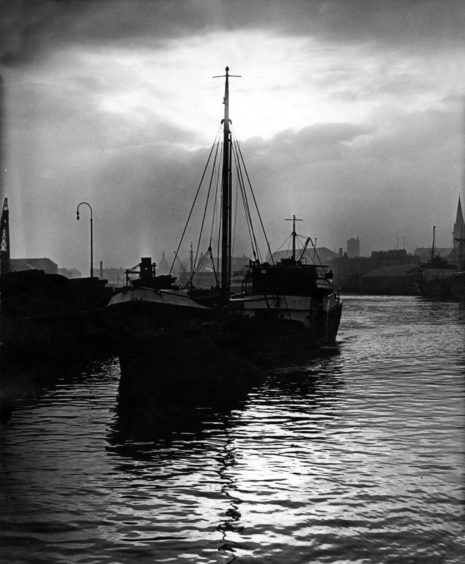
“The local merchant fleet quickly followed,” added Dr Watson, “and it is interesting, and often confusing, that the two biggest ship owners were both named William Thomson!
“William Bruce (or WB) Thompson, born at Broughty Ferry in 1837, was the town’s principal shipbuilder.
“He launched the Caledon Shipyard in 1874, the year before Victoria Dock opened. Eventually he would build some of the largest steel ships of the Victorian era.
“The second William Thomson was a Dundee woollens merchant who expanded into shipping in the 1850s. He owned and operated 30 sailing vessels and, later, built or bought around 20 steam ships. He was also the founder, along with his three sons, William, David (DC) and Frederick, of the present-day publishers DC Thomson & Co Ltd.”
Graving dock
The improvement works, designed by Thomas Telford, began in 1815.
It cost about £260,000 over the 40 years of its construction.
Most of the stone from the walls came from Kingoodie Quarry.
The graving dock cost an additional £46,600.
The Dundee Harbour Trustees, a locally elected body, had finally delivered to the merchants of Dundee the modern harbour with docks that they craved.
The Guildry of Dundee had invested funds the previous century in developing a New Port of Dundee (now Newport) to break the log jam of a restricted harbour with only tidal breakwaters but it was not successful and ended as a loss making enterprise.
The King William IV Dock was opened in 1825 and the Earl Grey Dock followed in 1834, which met the immediate requirements of the day.
The whalers, which ranged from 250 to 350 tonnes, were the biggest ships using the harbour.
Few of the brigs and schooners in the flax and timber trades were of more than 200-250 tonnes.
The occasional bigger ships, like the guano and nitrate carriers from Patagonia and Chile, and the pioneer jute carriers from Calcutta, were lightened in the river, so they could enter the docks.
By this time, the port was taking in over one million bales of jute each year.
James Leslie, the civil engineer who supervised construction of the Earl Grey Dock, foresaw the likelihood of the need for deeper docks.
His plans for Victoria Dock and Camperdown Dock were drawn up in 1835 and the work of reclamation to the north and south began immediately.
On the north side ground was needed urgently for the completion of the Dundee and Arbroath Railway, which began operations from a temporary terminus at Roodyards.
Most of the shipyards were concentrated around Trades Lane and these had to be moved before the line could be brought in to the East Station.
The harbour had to pay substantial compensation to Mr Thomas Anderson, the leading shipbuilder of the time, who had a long lease of what had been a first-class river front site.
In 1839 and 1840 the last ships from several yards were launched into a sort of lagoon and towed through a hole in the not-quite-complete railway embankment to the deeper water of the river.
Spoil from the river was the main ingredient of the newly-won ground.
There wasn’t enough of it to form new shipyard sites along Marine Parade as quickly as the Harbour Trustees would have liked.
This led to the setting up of temporary yards at Broughty Ferry, Seabraes and Kingoodie.
The “hungry forties” which put some shipbuilders out of business, plus the reclamation of additional ground, brought all the yards back to the harbour again.
Messrs John Brown and Co, who had begun business in Dundee and moved to Perth, had a yard between the Patent Slip and the West Graving Dock.
They were able to launch ships into what became Victoria Dock until the 1850s.
Jute trade
There was no spectacular increase in the trade of the harbour until the direct importation of jute began to bring bigger ships to the river in the early 1860s.
This led to the completion of Camperdown Dock and the temporary sealing-off of Victoria Dock which had been used for odd cargoes although there were no proper quays.
During this idle period, women bleached clothes on the gentle slopes of the dock-to-be.
At one stage the Harbour Board let part of the dock to a cow-feeder at £3 a year.
He grew a luxuriant crop of grass.
The Camperdown Dock was opened in 1865 before the Victoria Dock and East Graving Dock was opened in 1875.
By the 1890s ships were becoming too large to fit into the walled docks, so the Eastern Wharf was built.
In the 1900s the wharf became the first reinforced concrete dock in Scotland.
Extensions after the First World War included electric cranes.
Under an Order of 1933 the Harbour Trustees were due to fill in the now little used King William IV Dock.
Among distinguished visitors to the secret multi-national submarine flotilla based in and around Victoria Dock during the Second World War were King George V and Queen Mary, General De Gaulle, leader of the Free French, General Sikorski, commander of Polish forces in exile, the Duke of Kent, who was killed in an air crash a year later, and Crown Prince Olaf, later King of Norway.
One notable absentee was the Prime Minister, and former Dundee MP, Winston Churchill.
King William IV Dock, the Earl Grey Dock and the Tidal Basin were all filled in during the construction of the Tay Road Bridge in the 1960s
Today, Victoria Dock is used as a marina, part of the City Quay redevelopment.
Permanently anchored in the dock are HM Frigate Unicorn, the oldest British-built ship afloat anywhere in the world, and the former North Carr lightship.
